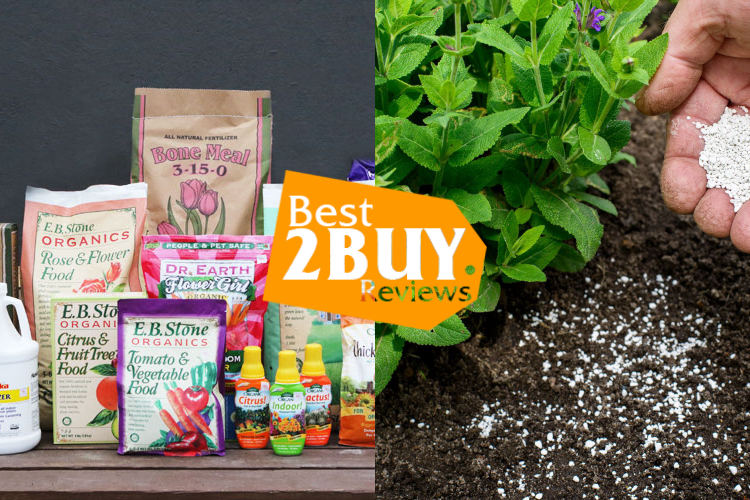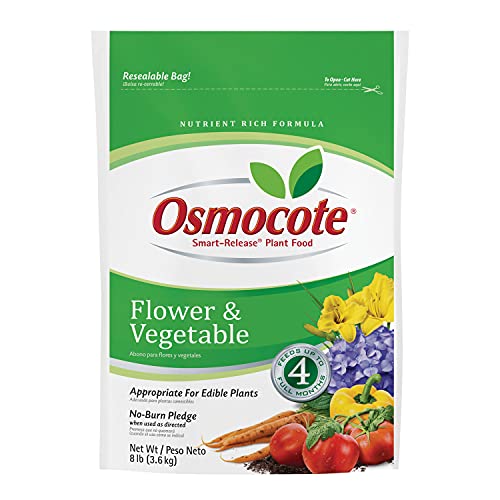How to Choose the Fertilizers & Plant Food
The Role of Fertilizers and Plant Food in Cultivating Lush Gardens

- 1. The Role of Fertilizers and Plant Food in Cultivating Lush Gardens
- 1.1. The Importance of Fertilizers
- 1.2. Is Plant Food The Same As Fertilizer?
- 1.3. Key Nutrients in Fertilizers
- 1.4. Types of Fertilizers
- 1.4.1. Organic Fertilizers
- 1.4.2. Inorganic or Synthetic Fertilizers
- 1.4.3. Slow-Release Fertilizers
- 1.5. Considerations When Choosing Fertilizers
- 1.5.1. Soil Analysis
- 1.5.2. NPK Ratio
- 1.5.3. Slow-Release vs. Quick-Release Fertilizers
- 1.5.4. Organic vs. Synthetic Fertilizers
- 1.5.5. pH Levels
- 1.5.6. Micronutrients
- 1.5.7. Water Solubility
- 1.6. When to Fertilize Your Plants
- 1.7. Application Techniques
- 1.8. Conclusion
Fertilizers and plant food are pivotal for promoting the well-being and development of plants. They supply vital elements like nitrogen, phosphorus, and potassium, contributing to enhanced soil structure and water retention. These components exist in diverse forms, ranging from solids and liquids to gases, and can originate from organic or inorganic origins. This article endeavors to explore the realm of fertilizers, elucidating their significance, various types, and recommended application practices.
The Importance of Fertilizers
Fertilizers play a crucial role in restoring the necessary nutrients for the growth, development, and fruit or flower production of plants. While plants in natural ecosystems obtain these nutrients from the soil, cultivated gardens may experience a depletion of nutrient levels over time. Fertilizers serve as a bridge, supplying plants with the essential elements needed for their optimal growth.
Is Plant Food The Same As Fertilizer?
In a precise sense, plants independently produce their own nourishment by utilizing elements present in the atmosphere and soil. Fertilizers, on the other hand, are substances added to the soil to enhance nutrient levels. Nevertheless, in gardening resources such as books, websites, and garden centers, the terms 'plant food' and 'fertilizers' are often interchangeably used. In the context of this article, when referring to 'plant food' or 'plant feeds,' we are essentially referring to fertilizers.
Key Nutrients in Fertilizers
Fertilizers typically contain three primary nutrients, often represented by the N-P-K ratio on the packaging:
- Nitrogen (N): Essential for leaf and stem development, nitrogen promotes vigorous growth and vibrant green foliage.
- Phosphorus (P): Crucial for root development, flower, and fruit production, phosphorus is a key player in the reproductive stages of plants.
- Potassium (K): Known for enhancing overall plant health, potassium contributes to disease resistance, water uptake, and various physiological processes.
Types of Fertilizers
Fertilizers come in various forms, catering to the specific needs of different plants and stages of growth. The main types include:
Organic Fertilizers
Derived from natural sources, organic fertilizers are prized for their ability to improve soil structure and fertility. Compost, manure, bone meal, and other organic materials decompose gradually, releasing essential nutrients into the soil. These nutrients include nitrogen, phosphorus, potassium, and various micronutrients, fostering a balanced and sustainable environment for plant growth.
One of the key advantages of organic fertilizers is their slow-release nature. Unlike synthetic counterparts that deliver nutrients rapidly, organic fertilizers provide a gradual and steady supply. This promotes long-term plant health, reduces the risk of nutrient leaching, and enhances soil structure by encouraging microbial activity.
Inorganic or Synthetic Fertilizers
Inorganic or synthetic fertilizers are chemical formulations specifically engineered to provide plants with precise nutrient ratios. These fertilizers are often water-soluble, allowing for quick absorption by plants. Their rapid nutrient release makes them an ideal choice for situations requiring immediate nutrient boosts, such as addressing nutrient deficiencies or promoting rapid growth in certain stages of a plant's life cycle.
Synthetic fertilizers typically contain a combination of nitrogen, phosphorus, and potassium (NPK), along with other essential micronutrients. This targeted approach enables growers to tailor the nutrient profile to the specific needs of their plants. However, it's crucial to apply synthetic fertilizers with care, as overuse can lead to nutrient imbalances, soil degradation, and environmental pollution.
Slow-Release Fertilizers
Slow-release fertilizers are designed to provide a gradual and sustained release of nutrients over an extended period. These formulations offer a practical solution to the challenges associated with both organic and synthetic fertilizers. By delivering nutrients slowly, they reduce the risk of over-fertilization and minimize the frequency of application.
Commonly available in granular or pellet form, slow-release fertilizers contain coated or encapsulated nutrients. This coating determines the rate at which the nutrients are released, offering a controlled and continuous supply to the plants. This not only ensures efficient nutrient utilization but also minimizes nutrient loss through leaching.
Slow-release fertilizers are particularly beneficial in situations where a consistent nutrient supply is essential, such as in container gardening, landscaping, or agricultural settings. They provide a balanced approach that combines the advantages of organic and synthetic fertilizers while mitigating their respective drawbacks.
Considerations When Choosing Fertilizers
Selecting the appropriate fertilizer is essential to encourage robust plant growth and optimize crop yields. Various factors must be taken into account during the fertilizer selection process to ensure that the chosen fertilizers cater to the unique requirements of both your plants and soil. The following are important aspects to consider:
Soil Analysis
Before selecting a fertilizer, it's imperative to conduct a soil analysis. Soil testing provides valuable insights into the nutrient composition of the soil, helping you tailor your fertilizer choice to the specific needs of your plants. Soil tests typically measure levels of nitrogen, phosphorus, potassium, and other essential elements. The results will guide you in selecting a fertilizer with the right nutrient balance to address any deficiencies.
NPK Ratio
Fertilizers are labeled with three numbers representing the NPK ratio, indicating the percentage of nitrogen (N), phosphorus (P), and potassium (K) they contain. Different plants have varying nutrient requirements at different stages of growth. For instance, leafy greens benefit from higher nitrogen levels, while flowering plants may require more phosphorus. Understanding the specific needs of your plants and matching them with the appropriate NPK ratio is crucial for optimal growth.
Slow-Release vs. Quick-Release Fertilizers
Fertilizers are categorized as either slow-release or quick-release. Quick-release fertilizers provide an immediate nutrient boost but may lead to rapid nutrient leaching and potential harm to plants if not used correctly. Slow-release fertilizers, on the other hand, provide a gradual and sustained release of nutrients over an extended period. Consider the growth rate and requirements of your plants to decide which type of fertilizer is most suitable.
Organic vs. Synthetic Fertilizers
The choice between organic and synthetic fertilizers depends on personal preferences, environmental concerns, and the specific needs of your plants. Organic fertilizers are derived from natural sources and release nutrients slowly, contributing to soil health. Synthetic fertilizers, on the other hand, offer a quick nutrient boost but may lead to soil degradation if overused. Consider the long-term impact on soil fertility and environmental sustainability when making this choice.
pH Levels
Soil pH plays a crucial role in nutrient availability. Some plants thrive in acidic soil, while others prefer alkaline conditions. Choose a fertilizer that complements the existing pH of your soil or one that helps adjust it to the desired level. Regular monitoring of soil pH is essential for maintaining a healthy growing environment.
Micronutrients
In addition to the primary nutrients (N, P, K), plants require various micronutrients for proper growth and development. Look for fertilizers that include essential micronutrients such as iron, zinc, copper, manganese, and boron. These trace elements are vital for specific biochemical processes within the plant.
Water Solubility
Water-soluble fertilizers are convenient for foliar feeding or when immediate nutrient absorption is necessary. They dissolve quickly in water, making nutrients readily available to plants. Consider the application method and the specific needs of your plants when choosing between water-soluble and granular fertilizers.
When to Fertilize Your Plants
Many plants enter a dormant state during winter, similar to hibernation. During this period, their growth either slows down significantly or comes to a complete halt, allowing them to conserve energy for the upcoming burst of spring growth. If you apply fertilizer to your plants in late fall or winter, it can disrupt their natural cycles and cause confusion. The growth spurt may occur prematurely, before the plants have had sufficient time to accumulate the necessary energy, resulting in weak and spindly growth.
To promote optimal growth, it is advisable to fertilize your plants at the beginning of spring. Subsequent applications throughout the season will help sustain their growth at the right time and keep them on the proper trajectory until fall. It's important to note that some plants, such as vegetables and container-grown annuals, may require more frequent fertilization than others.
Application Techniques
Proper application of fertilizers is crucial to avoid nutrient imbalances and environmental damage. Here are some best practices:
- Read and Follow Instructions: Always follow the manufacturer's instructions on the fertilizer packaging. The recommended dosage and application frequency may vary based on the type and brand.
- Timing Matters: Apply fertilizers at the right time. For instance, nitrogen-rich fertilizers are beneficial during the vegetative growth phase, while phosphorus-rich ones are more suitable during flowering.
- Even Distribution: Spread the fertilizer evenly around the plants to ensure uniform nutrient uptake. Uneven distribution can lead to patchy growth and nutrient deficiencies.
- Watering After Application: Water the plants thoroughly after applying fertilizers. This helps dissolve the nutrients and facilitates their absorption by the roots.
Conclusion
In the pursuit of nurturing flourishing and vibrant gardens, fertilizers and plant food emerge as essential aids. Recognizing the distinct requirements of plants, selecting the appropriate fertilizer, and applying it thoughtfully can turn a garden into a lively sanctuary of verdant beauty. Embracing conscientious fertilization methods allows gardeners to promote the well-being of their plants while also preserving the environment for future generations.











